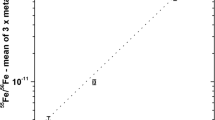Abstract
A compact and modern equipment for implementing the fast neutron and γ-ray transmission technique (FNGT) has been developed in order to estimate the sulphur content of crude oil. FNGT is employed for non- destructive analysis of different kinds of samples. The compact system presented in this work represents an improvement of our previous experimental set-up [1, 2]. It makes use of a 252Cf source, an EJ-301 liquid scintillator detector (2″ × 2″) with excellent n/γ discrimination capabilities, and modern nuclear electronics based on fast digitizers. The fast neutron and gamma transmission technique was employed to study a system for on-line sulphur concentration measurement in Venezuelan heavy sour oil. The range of sulphur concentrations investigated is between 0.1 and 6.5 wt%. The equipment performances and limitations are compared with those predicted by a Monte Carlo model built in GEANT4 v10.01. The results show the possibility to implement a compact unit for on-line determination of sulphur concentration in crude oil.








Similar content being viewed by others
References
Viesti G et al (2008) Nucl Instrum Meth A. doi:10.1016/j.nima.2008.05.024
Stevanato L et al (2013) Appl Radiat Isotopes. doi:10.1016/j.apradiso.2012.11.018
Vogel H, Haller D (2007) Eur J Radiol. doi:10.1016/j.ejrad.2007.03.040
Overley J, Chmelik M, Rasmussen R, Schofield R, Sieger R, Lefevre H (2006) Nucl Instrum Meth B. doi:10.1016/j.nimb.2006.04.173
Rynes J et al (1999) Nucl Instrum Meth A. doi:10.1016/S0168-9002(98)01039-0
Chen G, Lanza RC (2002) IEEE Trans Nucl Sci. doi:10.1109/TNS.2002.801696
Cywicka-Jakiel T (2003) Appl Energy. doi:10.1016/S0306-2619(02)00190-3
Sowerby B, Watt J (1990) Nucl Instrum Meth A. doi:10.1016/0168-9002(90)90861-Y
Vourvopoulos G, Womble P (1989) Nucl Instrum Meth B. doi:10.1016/0168-583X(89)90584-3
Borsaru M, Berry M, Biggs M, Rojc A (2004) Nucl Instrum Meth B. doi:10.1016/S0168-583X(03)01623-9
Muhammad S, Al-Mimar H (2015) Statistical analysis of the relations between API, specific gravity and sulphur content in the universal crude oil. Int J Sci Res 4(5):1279–1284
Mohamed AF, Taher AA, Amal E (2010) Fundamentals of petroleum refining, 1st edn. Elsevier, Amsterdam
Riazi MR (2005) Characterization and properties of petroleum fractions. American Society for Testing and Materials (ASTM), West Conshohocken
Tuttle RN (1987) Corrosion in oil and gas production. J Petrol Technol 39:756–762
Eufrásio Machado JP (2006) Effect of temperature on the level of corrosion caused by heavy petroleum on AISI 304 and AISI 444 stainless steel. Mater Res. doi:10.1590/S1516-14392006000200005
Wood M H, Vetere A L, Van Wijk L, (2013) Corrosion‐related accidents in petroleum refineries: lessons learned from accidents in EU and OECD countries. JRC Scientific and Policy Reports, EUR 26331 EN. Doi: 10.2788/37909
Gazulla MF et al (2013) Fuel 108:247–253. doi:10.1016/j.fuel.2013.02.049
Cadorim HR et al (2016) Talanta 146(2016):203–208. doi:10.1016/j.talanta.2015.07.088
Rasmussen RJ et al (1997) Nucl Instrum Meth B. doi:10.1016/S0168-583X(97)00120-1
Cywicka-Jakiel T (2003) Appl Energy. doi:10.1016/S0306-2619(02)00190-3
Stevanato L, Cester D, Nebbia G, Viesti G (2012) Nucl Instrum Meth A. doi:10.1016/j.nima.2012.06.047
Agostinelli S et al (2003) Nucl Instrum Meth A. doi:10.1016/S0168-9002(03)01368-8
Allison J et al (2006) IEEE Trans Nucl Sci. doi:10.1109/TNS.2006.869826
Gohil M et al (2012) Nucl Instrum Meth A. doi:10.1016/j.nima.2011.10.054
Verbinski V, Weber H, Sund R (1973) Prompt gamma rays from 235U(n, f), 239Pu(n, f), and spontaneous fission of 252Cf. Phys Rev C 7:1173–1185
Antcheva I et al (2011) Comput Phys Commun. doi:10.1016/j.cpc.2011.02.008
Stevanato L et al (2011) Appl Radiat Isotopes. doi:10.1016/j.apradiso.2010.10.022
Acknowledgements
The co-authors F. Pino and L. Sajo Bohus are indebted for the financial support as invited visitors to the University of Padova.
Author information
Authors and Affiliations
Corresponding author
Rights and permissions
About this article
Cite this article
Pino, F., Stevanato, L., Fabris, D. et al. Sulphur content estimation of Venezuelan heavy oil by fast neutron and gamma transmission technique. J Radioanal Nucl Chem 314, 1833–1839 (2017). https://doi.org/10.1007/s10967-017-5533-2
Received:
Published:
Issue Date:
DOI: https://doi.org/10.1007/s10967-017-5533-2




